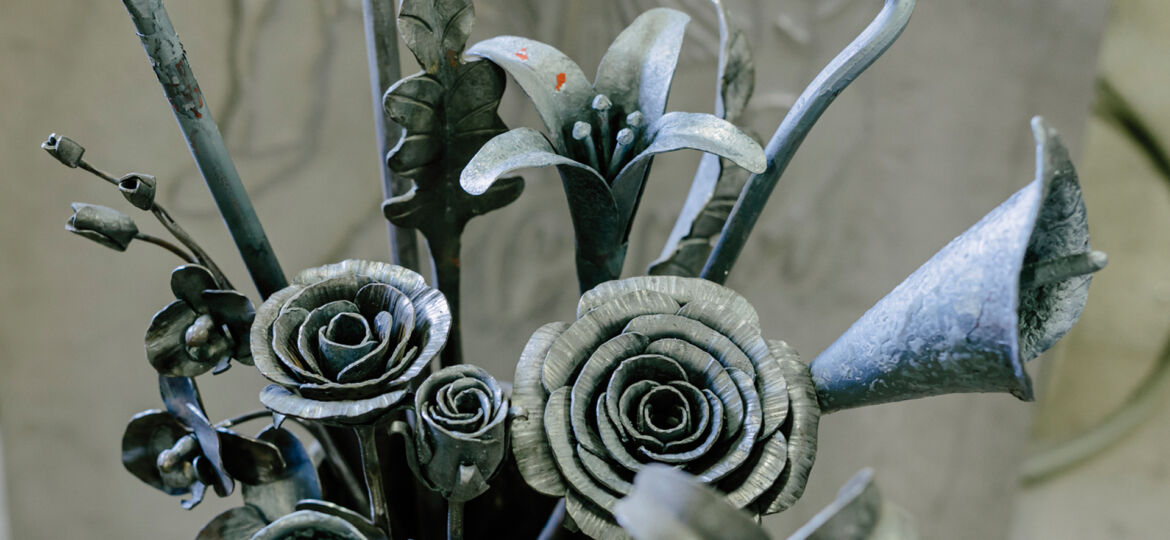
Discovering a small workshop where people still work with the hand-forge, and with extreme attention to detail, to create unique artistic pieces and custom productions of great character.
Stefano Bellesi, wrought iron becomes art
He is among the very last of the wrought-iron craftsmen to work with the hand-forge and to exploit the endless possibilities of this technique-a work that has always been associated with physical strength and endurance but at the same time capable of bringing to life forms of extraordinary grace and beauty.
Stefano Bellesi indulged the passion for this trade he had since childhood, and starting from scratch in 2000-this year he celebrates 20 years in business-he created in the Camerino area his small workshop dedicated to artistic wrought iron, specializing in Customized and entirely handmade productions.
“I start with the design sketch that I sketch on paper. Then I trace the drawing on the ground at a scale of 1:1 with chalk, so that I have full-scale proportions of all the elements that make up the design. At that point I model each piece on top of the drawing, that is, comparing it to the drawing until it looks the same and overlaps. Then I prepare the pieces for forging, cutting them to the various dimensions I need. I then switch to hot forging and create the shapes needed for the project, following the details of the drawing in plaster on the ground. I forge and give the desired shape to curls, scrolls, flowers. I tap the iron with a mallet to rough out and finish with a hammer for details. Then there is chiseling and other stages of customizing the design according to the customer’s requests. Finally, the assembly of the pieces with bolting, as per tradition.”
Complex and physically taxing work, but above all a design and artistic approach in which nothing is left to chance and in which every detail is important to make a difference.
“You can’t always do what other people do. In order to stand out, you have to do something different: things that move you up the ladder.”
For Stefano Bellesi, one of the expressions of this difference, which distinguishes and characterizes his work, is the creation of wrought iron flowers made exclusively by hand, an artistic production that stems from a completely personal passion and that has made him known and appreciated even outside the region.
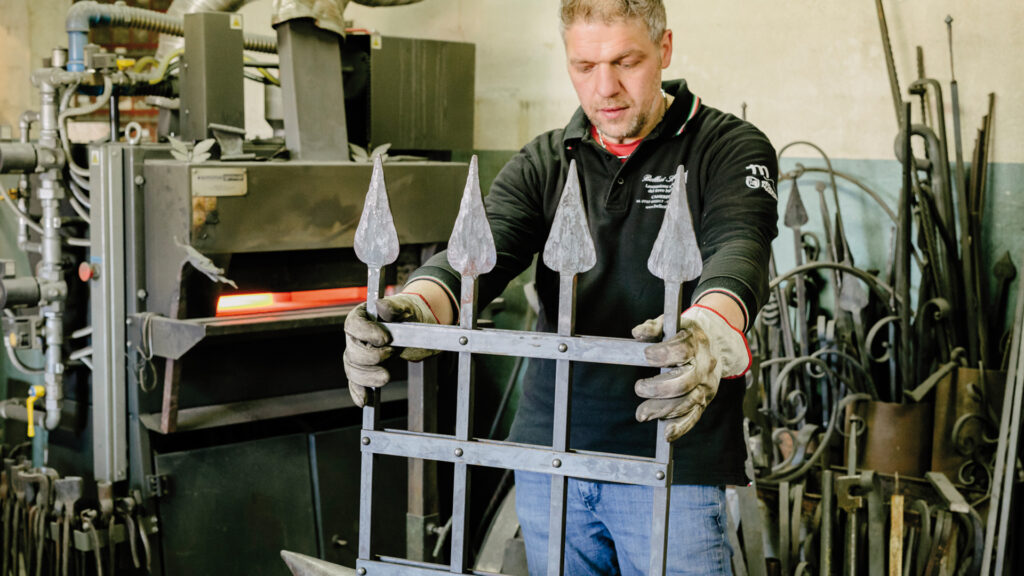
Indoor and outdoor furnishing elements, gate decorations, railings, handrails, but also and especially stand-alone furnishings, knick-knacks and decorative objects, the wrought iron flowers that Stefano Bellesi creates are truly incredible.
“One of the most difficult things to do in wrought iron”: delicate bouquets of roses, calla lilies, calla lilies, orchids, forged one by one, hammered to define every little detail on petals, leaves, stems. Careful and valuable work to transform iron into graceful and gentle material.
His expertise in making artistic wrought iron elements with this degree of detail also leads him to make wedding favors and small cadeaux-flowers and delicate butterflies-and then bracelets, pendants, clasps and other accessories.
Then there is his core business: specifically gates, what he calls “the calling card of a home.” But also railings, gratings, interior staircases totally produced in wrought iron, and handrails that enhance any type of staircase with an exclusive touch.
“These are the jobs for which clients seek me the most, because they need a custom-made, personalized, beautiful, artistic product, an artisanal product in short, made by hand-forging, in which there are no molded pieces, standard measurements, but everything is made to meet the client’s special needs: a one-of-a-kind piece in every way.”
His résumé as a wrought iron craftsman-artist is enriched by other prestigious experiences, such as theset decoration of the show Cavalleria rusticana, staged in 2015 at the Macerata’s Sferisterio: a stunning 25-meter-long Art Nouveau railing created by Stefano Bellesi and Massimiliano Lauri, the result of the collaboration between worlds of culture and craftsmanship, and in particular the union between Macerata Opera Festival and CNA Artistico e Tradizionale Macerata.
Also important are Stefano Bellesi’s street furniture works for city traffic circles in the Macerata area.
The imagination of a true wrought iron artist like Stefano Bellesi does not stop there: in fact, he also produces medieval metal swords and blades. His specialization in this field earned him, for several editions of the event, the important task of making the sword as a prize for the winner of the Corsa alla Spada e Palio, a traditional historical reenactment of Camerino .
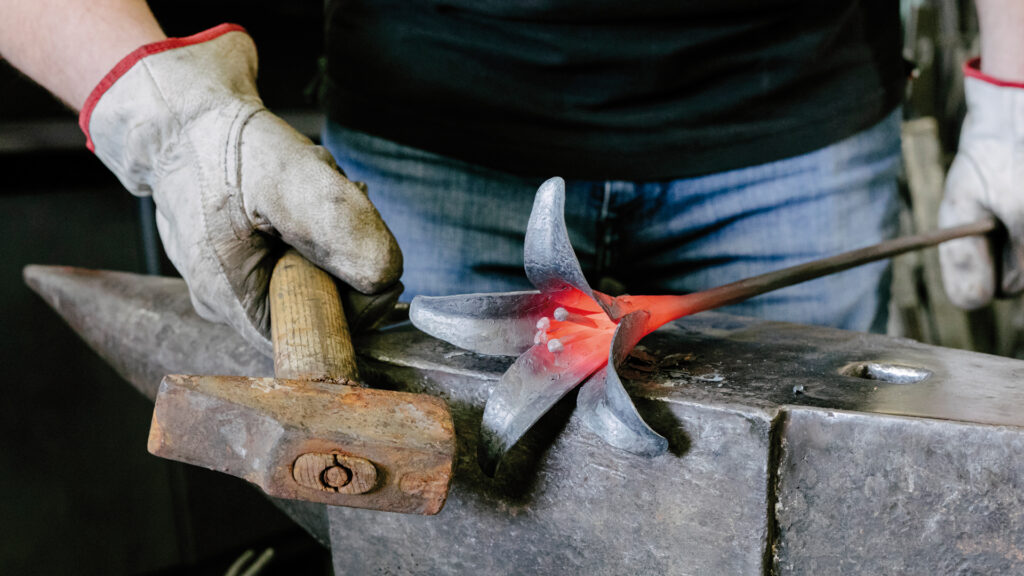
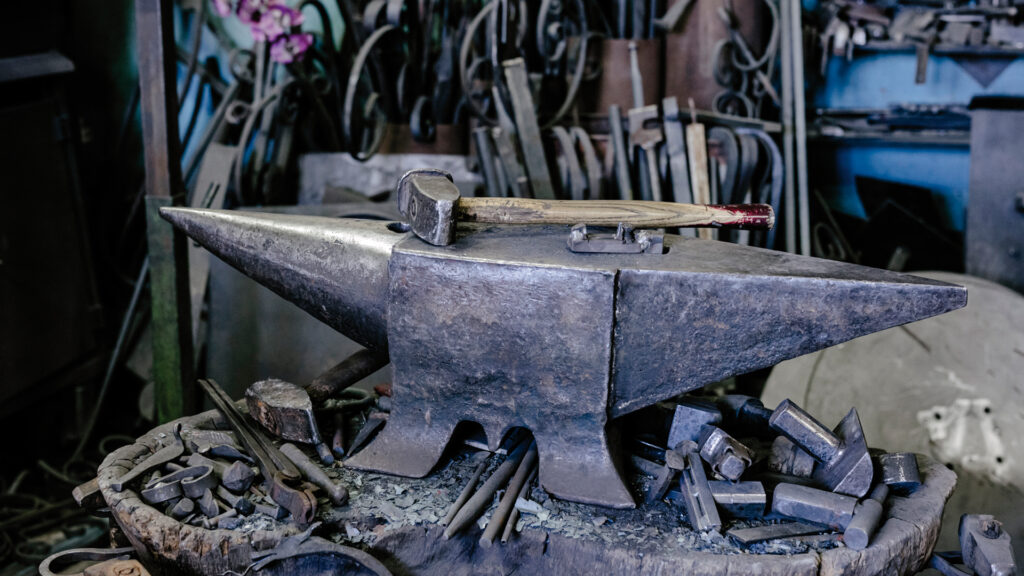
Handing down so much knowledge and high-level craftsmanship and artistic skills therefore becomes a necessity and also a duty for the artisan to ensure that none of this should disappear.
Vocational training, internships are an important tool to make it possible to overcome time and pass the baton through the generations, but the problems concretely remain: “In 20 years of business, there has never been a knock on the door of my workshop from a young person who wanted to become my apprentice or trainee, who wanted, in short, to start on a path to learn this work.”
This means that some realities of artistic craftsmanship probably need to be made known more closely than others, especially to young people, in order to instill in new generations the spark of a passion that they then feel they want to nurture.
The field of wrought iron is a fascinating but also tough and challenging creative field-a world that one can approach at first with curiosity and a spirit of discovery and then, if one feels a genuine affinity, choose for life.
It is a life choice that is not easy, that must be sustained by passion, and that only an “artisan within” can carry on over time with full and unconditional dedication, creating with the power of fire and one’s own arms and putting to daily use, with personal satisfaction, a manual skill built up over the years.
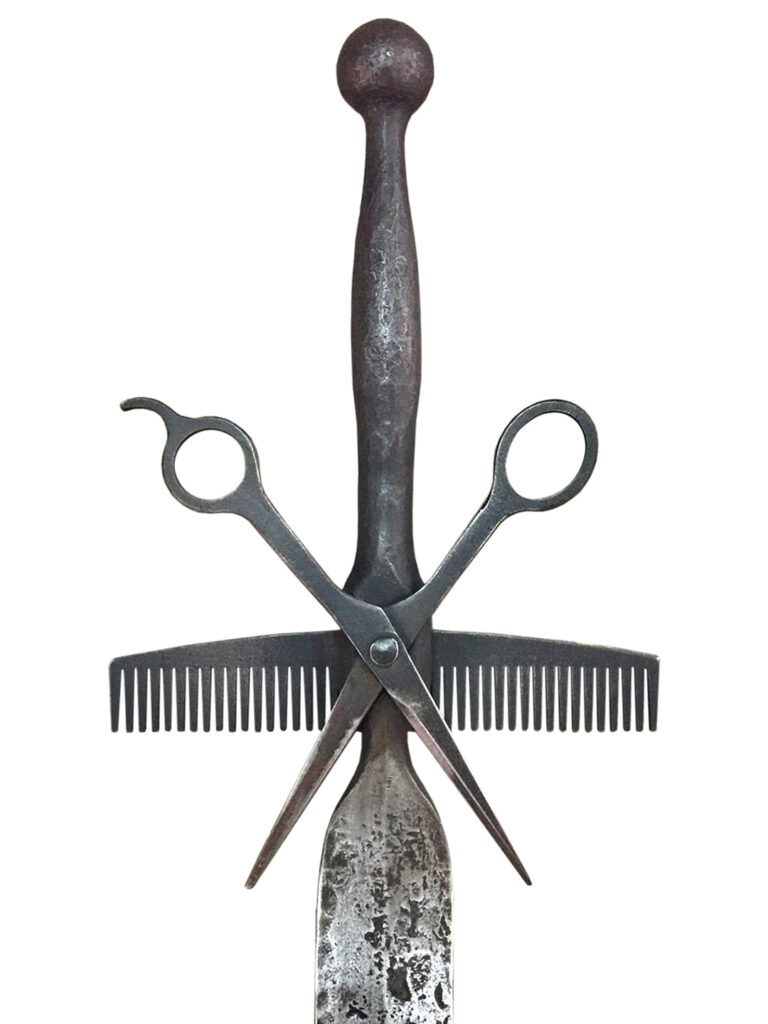
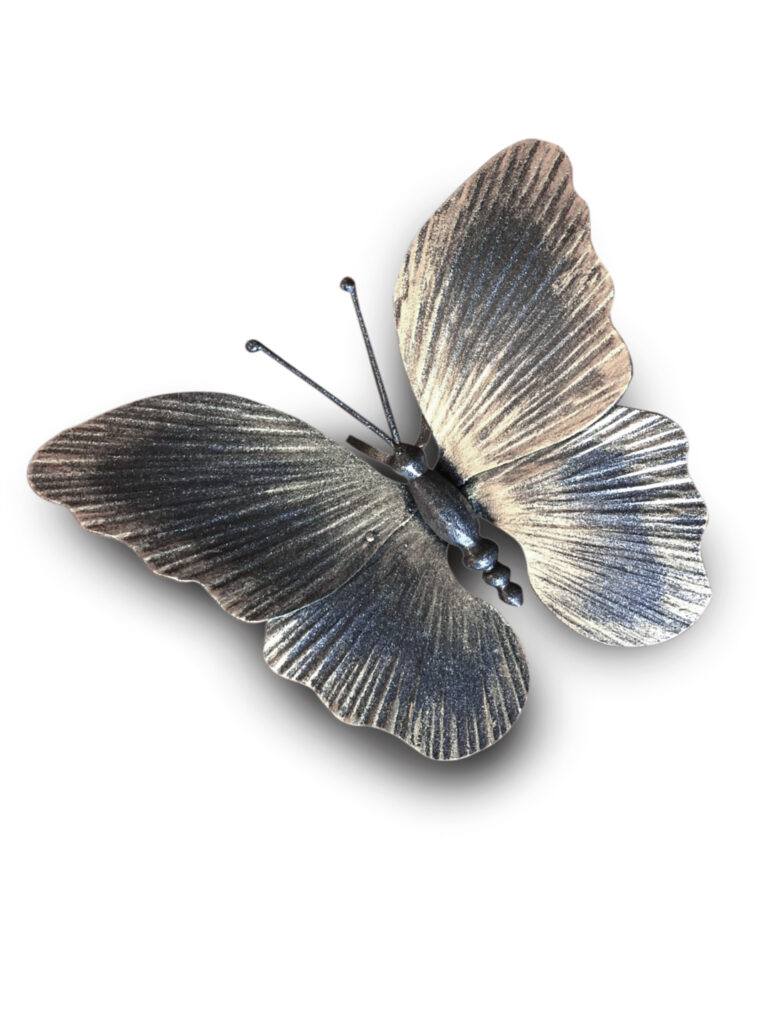
Wrought iron in the Marches: the legacy of a great craft of tradition
Metalworking is originally devoted to making tools for domestic and professional use. The presence of blacksmith stores in every hamlet has always been linked to the need to build or repair objects of common use, scythes, hoes, gratings. The introduction of more advanced working methods in agricultural activity, which took place between the 19th and 20th centuries, leads to an evolution of the iron parts of equipment.
The evolution thus also affects the work of blacksmiths, who begin to focus on producing functional as well as decorative objects for the domestic environment, both indoor and outdoor. More and more refined objects, handles, chandeliers, bedheads, grilles, gates, are coming out of the workshops.
The low demand for mass quantities of metal products at the same time conditions the activity of ironworkers who become creators of unique objects, having to meet individual, customized and tailor-made requests.
Blacksmiths, accustomed to shaping iron for a wide variety of needs, acquire remarkable technical skills that, combined with creative ability, result in high-quality productions in the field of artistic wrought iron.
These unknown artists bequeathed to their villages gates and gates, well ferrules, picturesque inn and tavern signs, roosters and wind marker flags, and portal lunettes: wrought iron artists who were inspired by various historical and traditional styles and motifs, sometimes closer to aristocratic and bourgeois culture, others decidedly immersed in popular culture and art.
Laura Ricci

